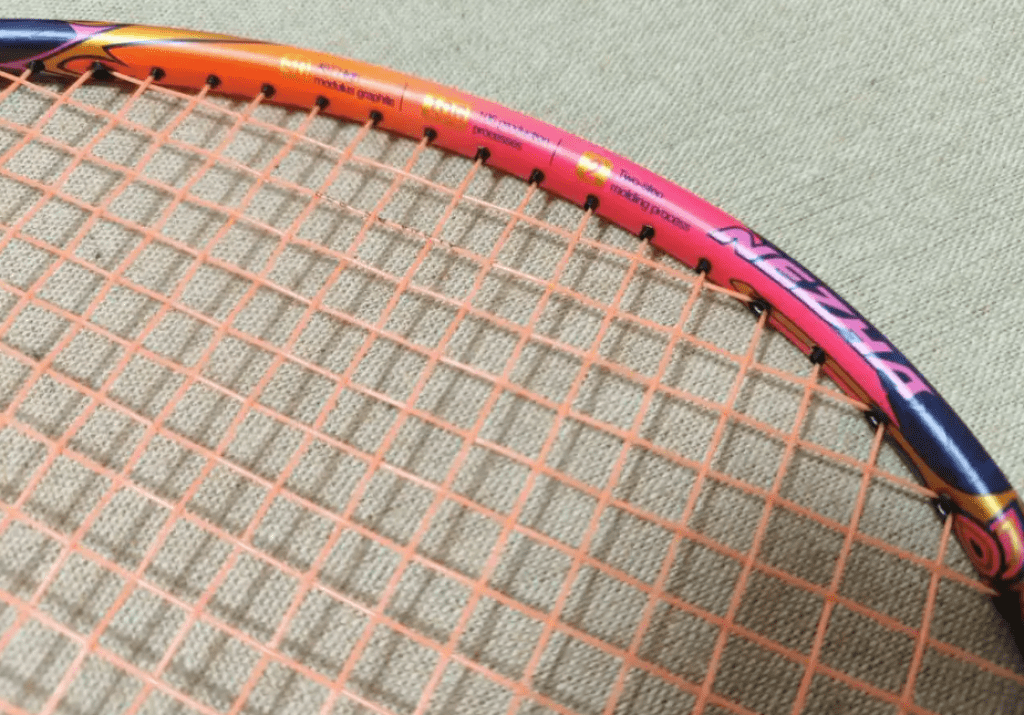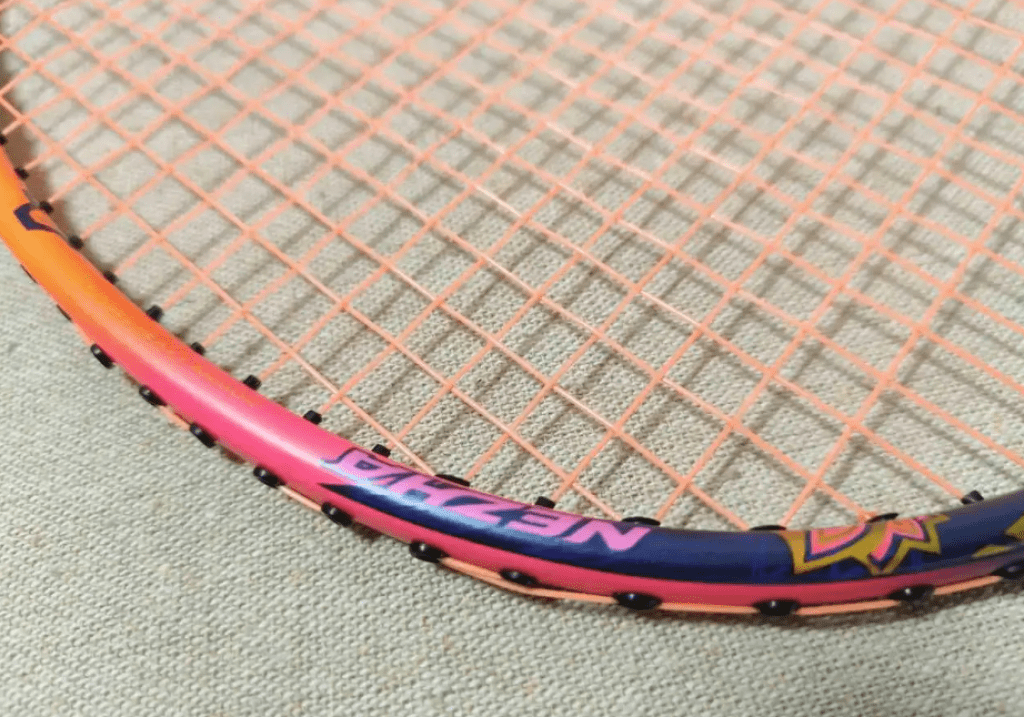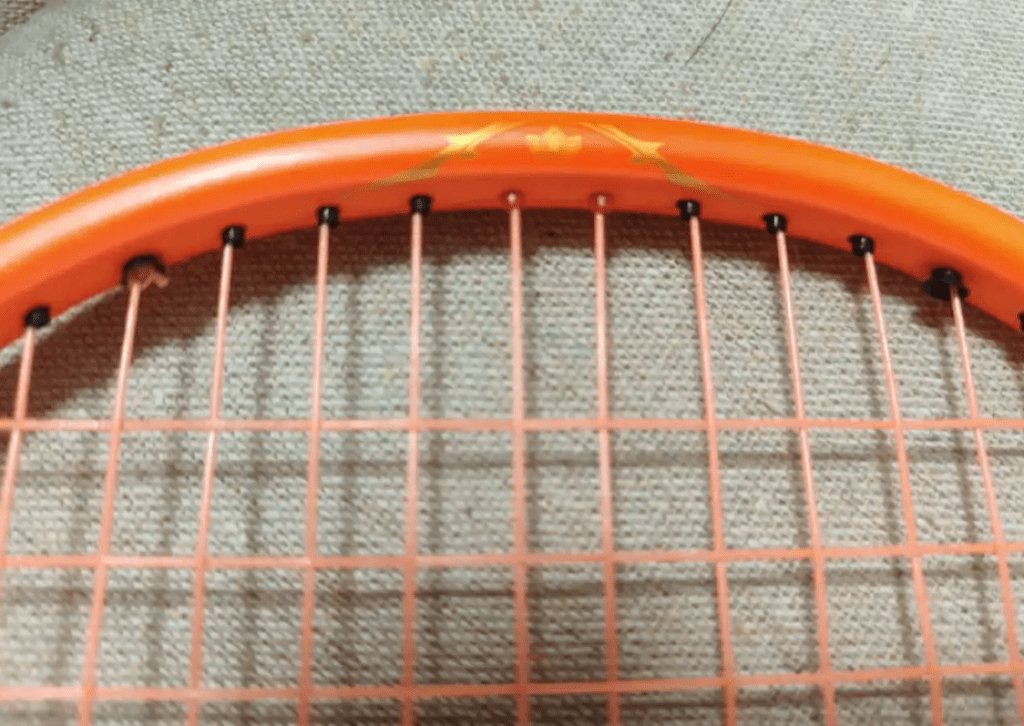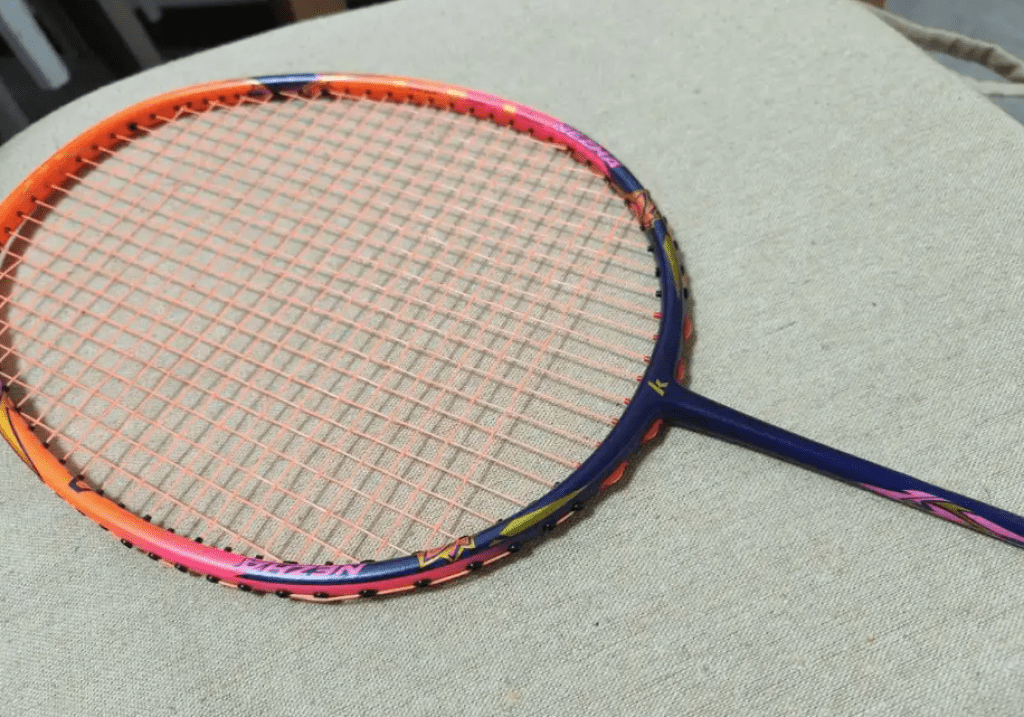Continuing with my Kawasaki experience:
Recently, Kawasaki has put significant promotional resources into pushing a lightweight offensive racket. Packaged in a gift box and featuring design elements from “The Investiture of the Gods,” this racket combines high-quality materials with a friendly feel, creating a small yet potent offensive tool. Before this, I hadn’t seen any Kawasaki product with such a clear offensive inclination in the same specification range. After trying out the last two rackets, I think Kawasaki has a knack for this mid-range ultra-light racket category.

Specifications: 5UG6, with a base, weight in play 88.19g, balance point 301mm, shaft length 220mm, medium hardness, box-shaped frame, 76-hole string bed, 9-3 o’clock string grooves, warranty for 35 pounds, string tension 26-28 lbs BS900.
The matte finish, bold red and blue contrasting design, and decorations featuring lotus flowers and fire wheels all align with traditional mythological themes. Although Kawasaki excels in paint and artistic design, the visual impact of the Nezha 35 is quite heavy due to its color scheme. If you create a PPT page with a blue background and red text, or vice versa, you’ll understand why the Nezha 35’s design might feel overwhelming. The gift box packaging is attractive, but it only includes a standard racket cover and grip tape.

The balance point of the racket is relatively restrained compared to other 5U rackets. Even though it exceeds 300mm without being bottom-heavy, its main feature remains its “lightness.” However, the swing weight is somewhat elevated. The Nezha 35’s driving feel is quite noticeable due to its long shaft connection. The racket can use its shaft’s deformation to generate power, and the rebound of this deformation is also excellent. Coupled with the box-shaped frame’s stability, it can ensure directional accuracy in long-line shots, with good control for baseline high balls.
The shaft hardness is moderate, and the Nezha’s power feel is good, not burdensome for me. The ultra-light racket requires higher precision in short bursts of power, and I enjoy the feedback from concentrated power shots.

Since the launch of the popular small hammer from Blue Factory, “hammer-like” ultra-light rackets have become a trend. To stand out among many competitors, elasticity is key. The 40T-grade material used in the Nezha 35 ensures that it can produce a certain level of power even without high swing weight. Admittedly, its own mass is not enough to create a substantial threat in the mid-to-back court, even with ample power generation opportunities. However, its quick release, good elasticity, short pre-swing, and absence of stiffness make it advantageous for handling active shots. It excels in sudden intercepts and aggressive net play, increasing the tempo of the game and putting pressure on opponents, which is the scenario Nezha desires.

At the same time, the racket’s surface performance is not overly aggressive but retains a certain ball-holding feel. This benefits receiving, scrapping, and flicking shots, with higher tolerance for control in net shots, making users more confident on court and achieving a positive mental feedback. Although the Nezha does not match the stability of 3U or 4U offensive rackets, its flexibility and delicate operation make it a worthwhile choice.
I would describe its defensive performance as “resolute.” It is flexible in handling shots at the net, angles, and defensive play, though it lacks a bit of appropriate shock absorption. When trying to defend against a weak opponent’s down smash and hoping to block with a net shot, it can be prone to popping up a bit.

The Nezha also performs excellently in handling passive shots, with sufficient shaft elasticity and a forgiving racket face. Its low difficulty in driving and swing weight make it easy to generate power, ensuring better placement of the ball.
Additionally, the recent issue of Kawasaki’s product homogenization seems to have been significantly alleviated in the ultra-light racket category, which is the most prone to failure. For the recent Aurora 50S and Nezha 35, despite differences in shaft quality, both demonstrate differences in swing speed, feedback, and tuning focus, and both are good to use. This indicates a thorough understanding of the products.


Leave a Reply